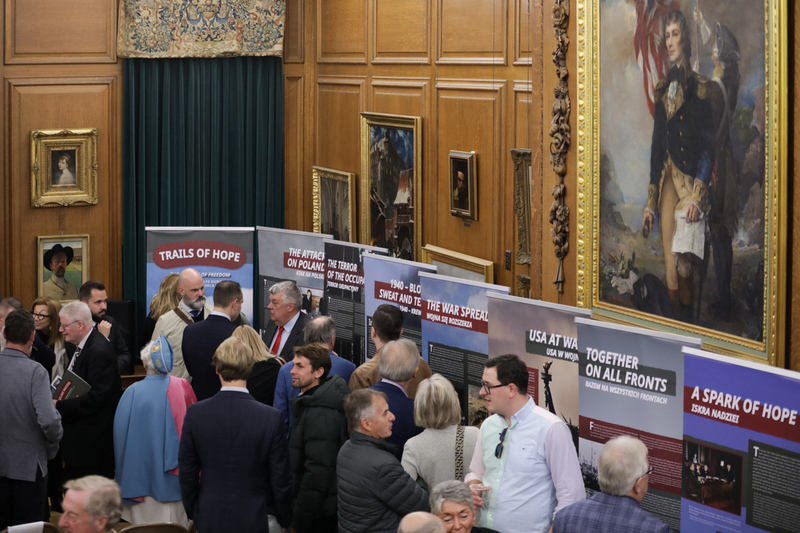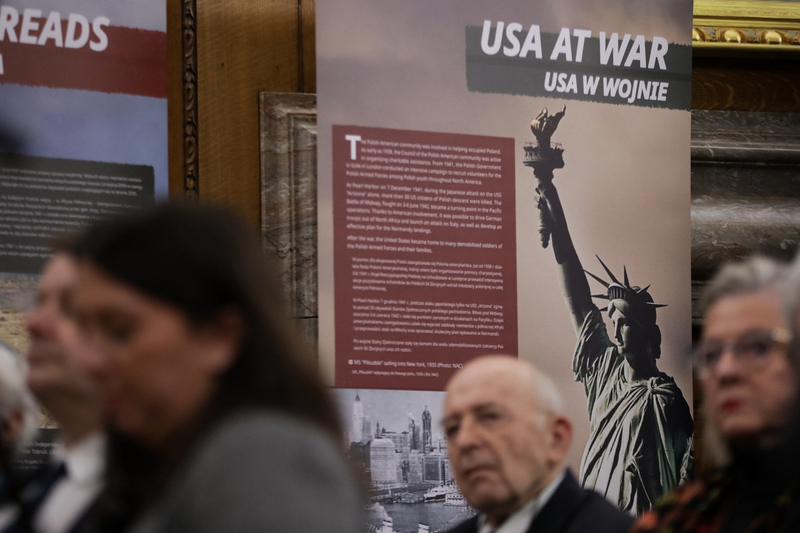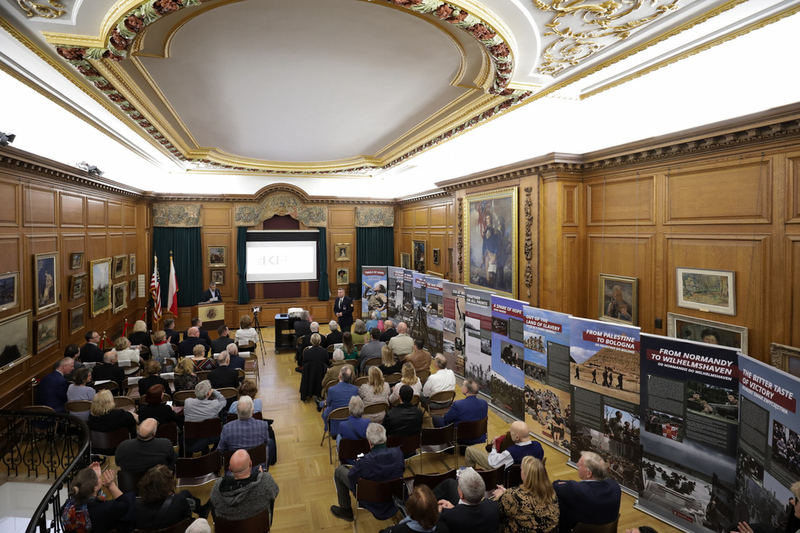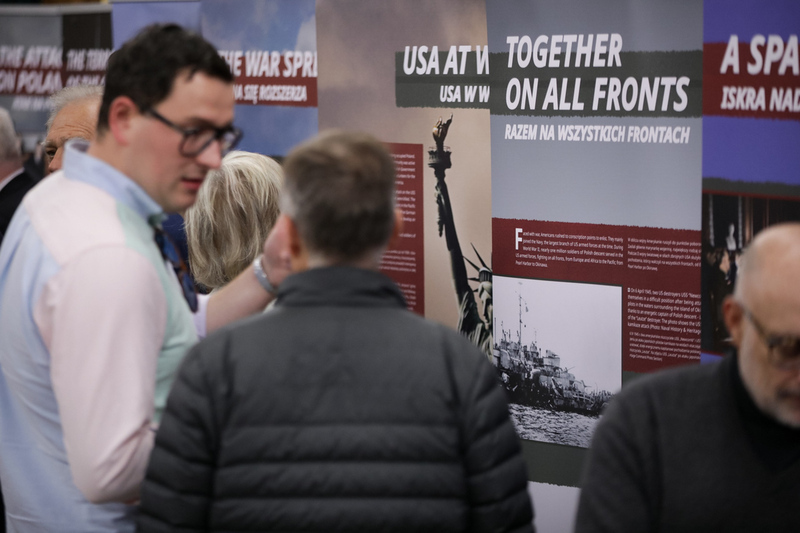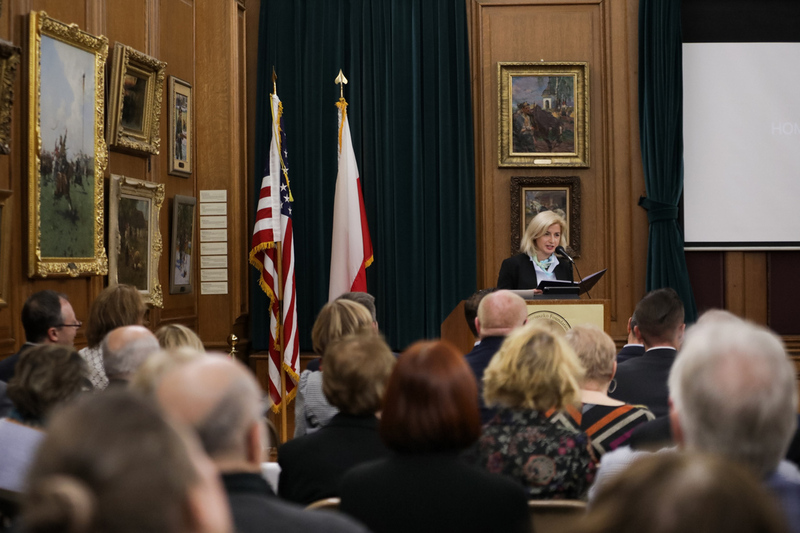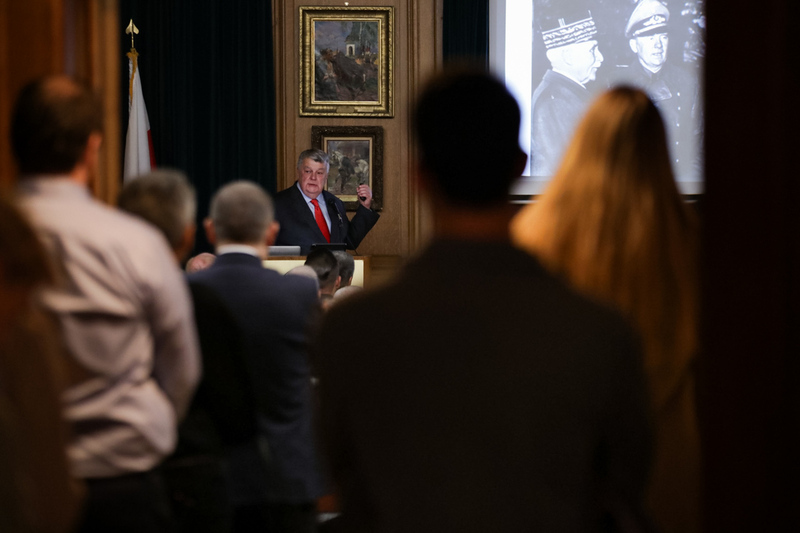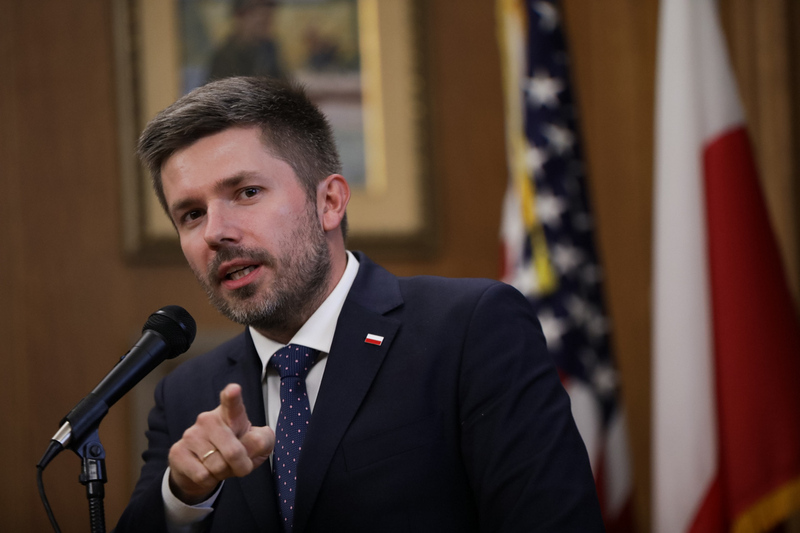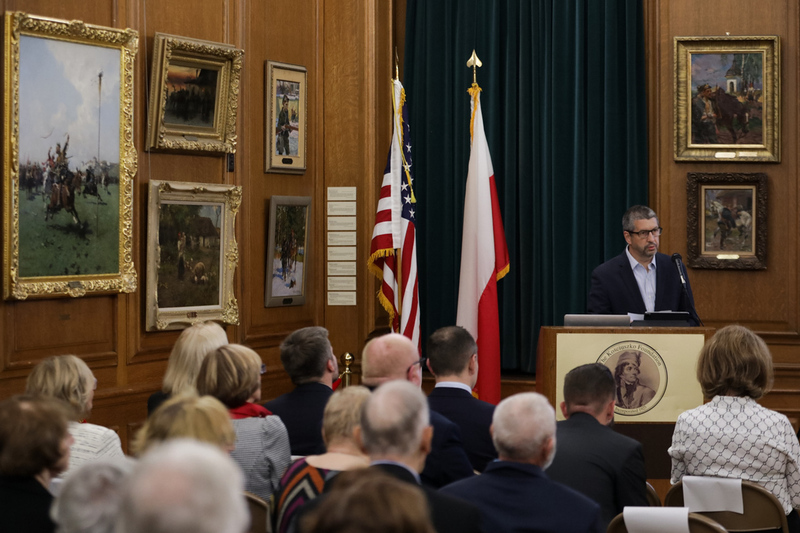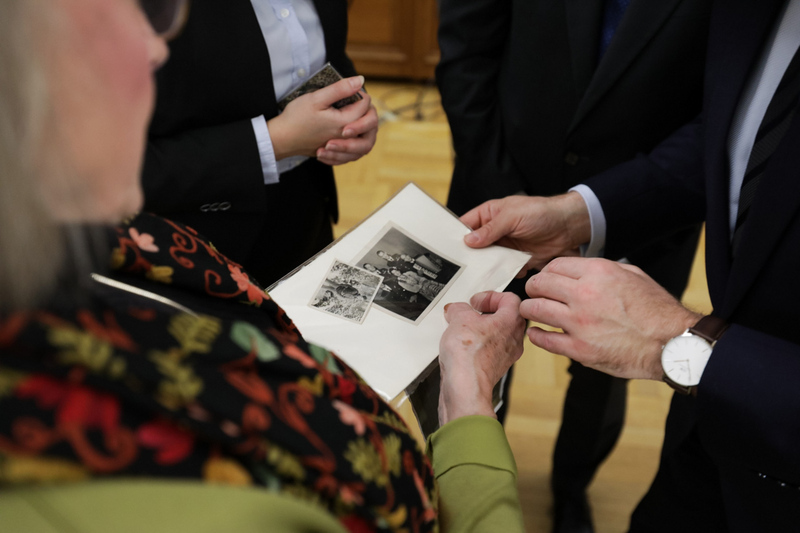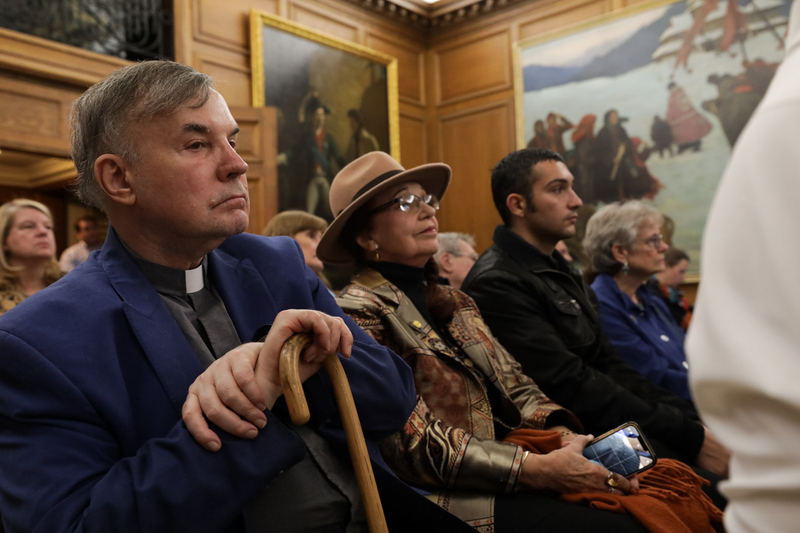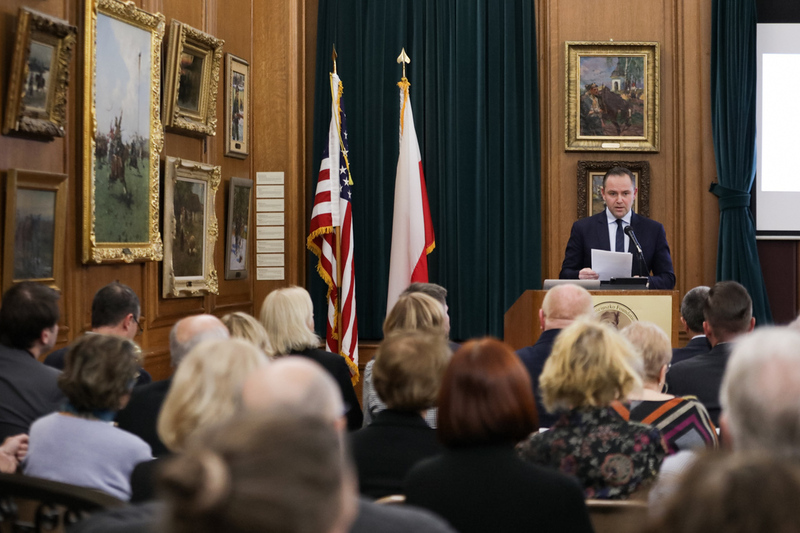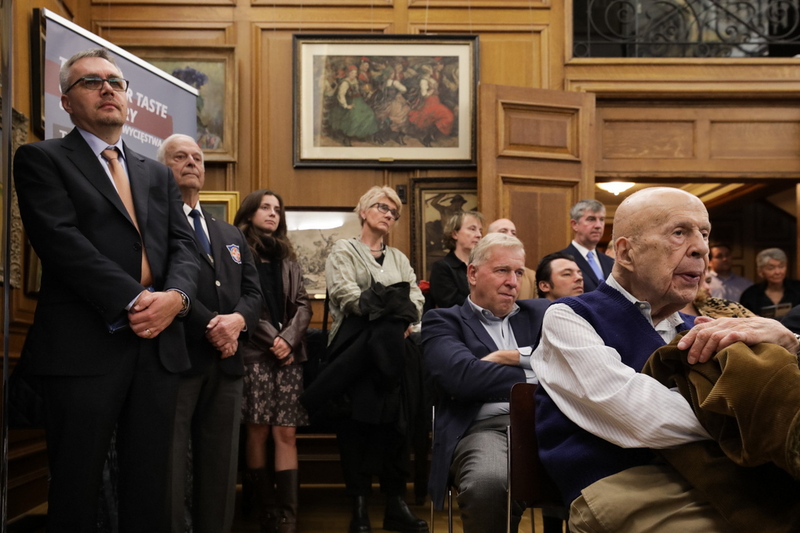We are meeting today in the heart of New York, in Manhattan, at the headquarters of the Kościuszko Foundation, the establishment and activities of which are the best illustration of Polish-American friendship and cooperation. In his message to Congress in January 1918, none other than the next President of the United States, Woodrow Wilson, called for the creation of an independent Polish state. His words flowed into the world. Earlier, Polish emigrants from the United States joined the ranks of the so-called Blue Army in France to fight for the free homeland of their ancestors. After the end of World War I, Poland regained its independence, said President Karol Nawrocki during the opening of the exhibition.
It might seem that totalitarian regimes are a thing of the past. Unfortunately, the current geopolitical situation clearly proves that this is not the case. We still have a long way to go if we want democracy, human rights and mutual respect to flourish. Therefore, we should make sure that historical truth is being preserved. We must never confuse aggressors with war victims. Unfortunately,the crimes of both Nazi Germany and Soviet Russia still haven’t been fully accounted for. Bringing the truth to light and the perpetrators to justice is something that needs to be done. Fulfilling this mission remains our duty and obligation!
The ceremonial opening of the exhibition was attended by, among others: Adrian Kubicki, Consul General of the Republic of Poland in New York, Marek Skulimowski, President of the Kosciuszko Foundation, Alex Storozynski, American journalist of Polish descent, President of the Foundation in the years 2008-2016, and Iwona Drąg-Korga, President of the Józef Piłsudski Institute in America.
Founded in 1925, the Kosciuszko Foundation promotes closer ties between Poland and the United States through educational, scientific and cultural exchanges. It awards up to $1.7 million annually in fellowships and grants to graduate students, scholars, scientists, professionals, and artists, and promotes Polish culture in America. The Foundation has awarded scholarships and provided a forum to Poles who have changed history.The Kosciuszko Foundation is dedicated to promoting educational and cultural exchanges between the United States and Poland and to increasing American understanding of Polish culture and history.
Founded in 1925, on the eve of the 150th anniversary of Thaddeus Kosciuszko's enlistment in the American revolutionary cause, the Foundation is a national not-for-profit, nonpartisan, and nonsectarian organization.The Foundation's work reaches audiences throughout the United States, through its headquarters in New York City and its regional Chapters in Chicago, Denver (Rocky Mountain), Houston (Texas), Philadelphia, Pittsburgh, Springfield (New England), Buffalo (Western New York State), Ohio (Cleveland) as well as through its National Advisory Council.
The IPN flagship "Trails of Hope, the Odyssey of Freedom” project aims to commemorate the military effort of the Polish Armed Forces during WW2 and the stories of civilians evacuated from the USSR with the Anders Army. Launched in March 2022, it has already visited dozens of cultural institutions worldwide, and that journey is far from over.
New York Heroes
One of the exhibition boards presented in New York portrays the family history of Alex Storozynski, whose father - Dionizy - served in the 1st Armored Division of General Stanisław Maczek. while his grandfather - Władyslaw Krzyżanowski - went through the combat trail with the 2nd Polish Corps fighting at, among others, Monte Cassino. After the end of the war and demobilization, the two met in Argentina, where Dionizy met his future wife Irena Krzyżanowska, Władyslaw's daughter and Alex's mother.
Władysław Krzyżanowski (born 10 July 1903 in the Podolia Region) in the Second Polish Republic lived in Rivne, Volhynia with his wife and five daughters. In September 1939, he fought against the Germans near Tomaszów and Lubochnia. He was taken prisoner but managed to escape and get through to his family in Rivne. After the Red Army entered Poland he was arrested by the NKVD and sent to Siberia. Following the announcement of the amnesty and the Sikorski-Mayski Pact, he reached the Polish Army being formed in the USSR and was evacuated with it to the Middle East. In 1944, he participated in the Allied landings in Italy. He fought at Monte Cassino, Ancona and Bologna in the ranks of the 2nd Polish Corps At the end of the war he managed to locate his wife Zofia and daughters whom he brought to Italy. Together they later emigrated to Great Britain, Argentina and the United States.
Dionizy Juliusz Storożyński (born 8 July 1922 in Horodenka, near Lviv) was a 17- year-old scout when World War II broke out. After the Red Army entered Poland, his family house was destroyed by the NKVD and the family was deported to Siberia. Dionizy managed to escape and get through Romania to France, where he joined the Polish Army. He was assigned to the 10th Armoured Brigade commanded by Gen. Stanisław Maczek. Following the German attack on France in 1940, he was evacuated to Great Britain. After the Allies landed in Normandy in 1944, he participated in the Battle of Falaise and together with Polish soldiers liberated the cities of France, Belgium and the Netherlands from German occupation. After the end of the war and demobilization, he did not return to Poland. He left for Argentina, where he met his later wife Irena Krzyżanowska, Władysław's daughter. Dionizy Storożynski died in 1977.
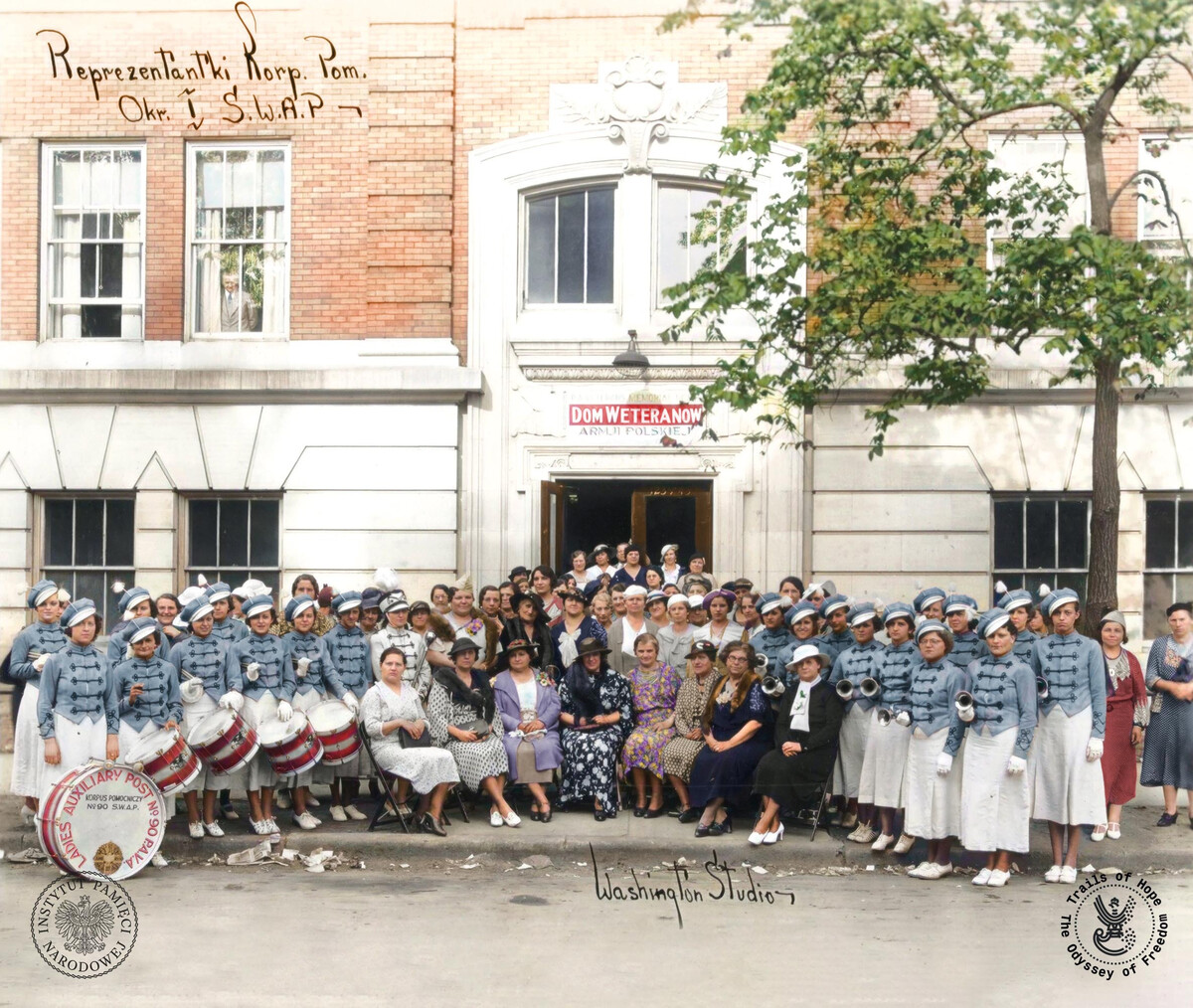

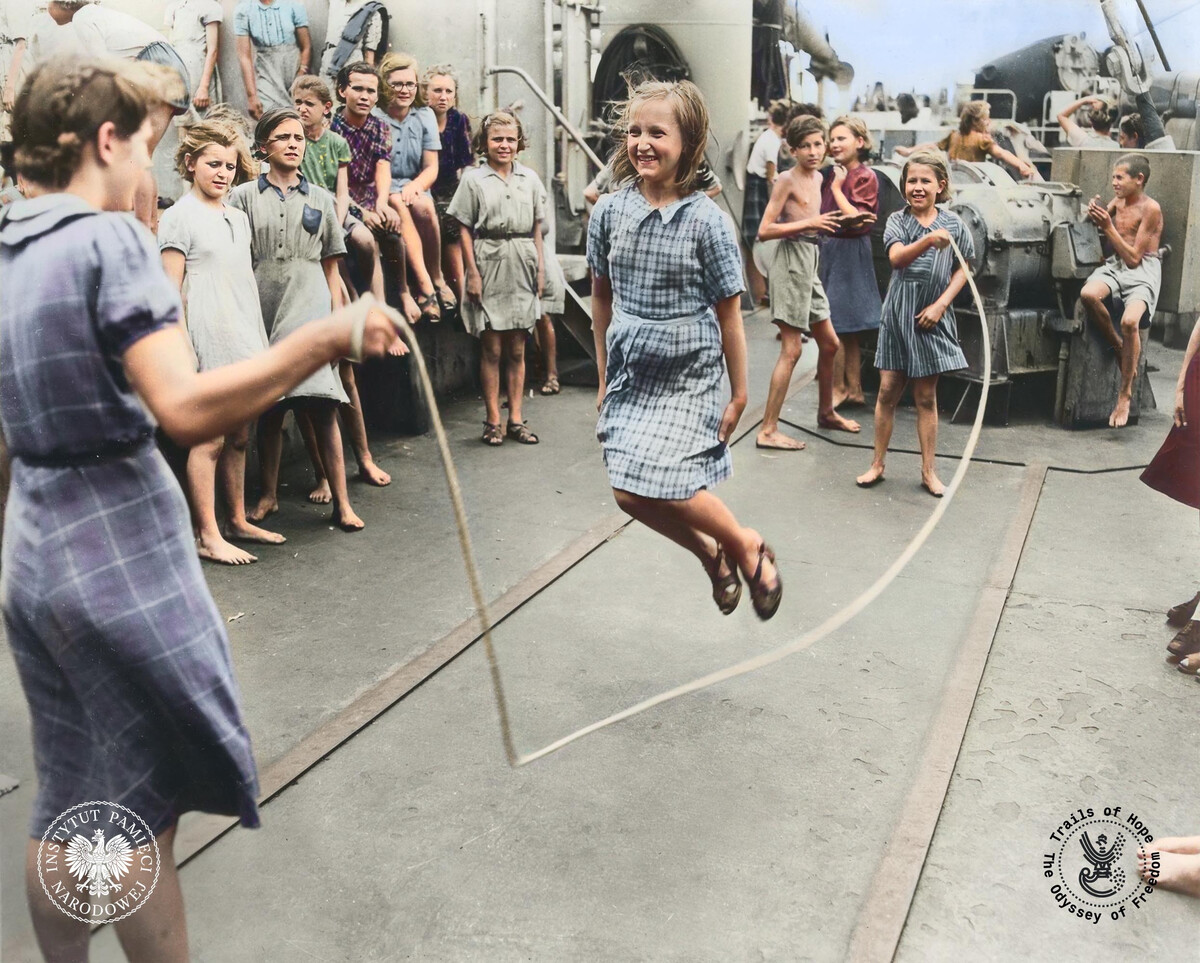
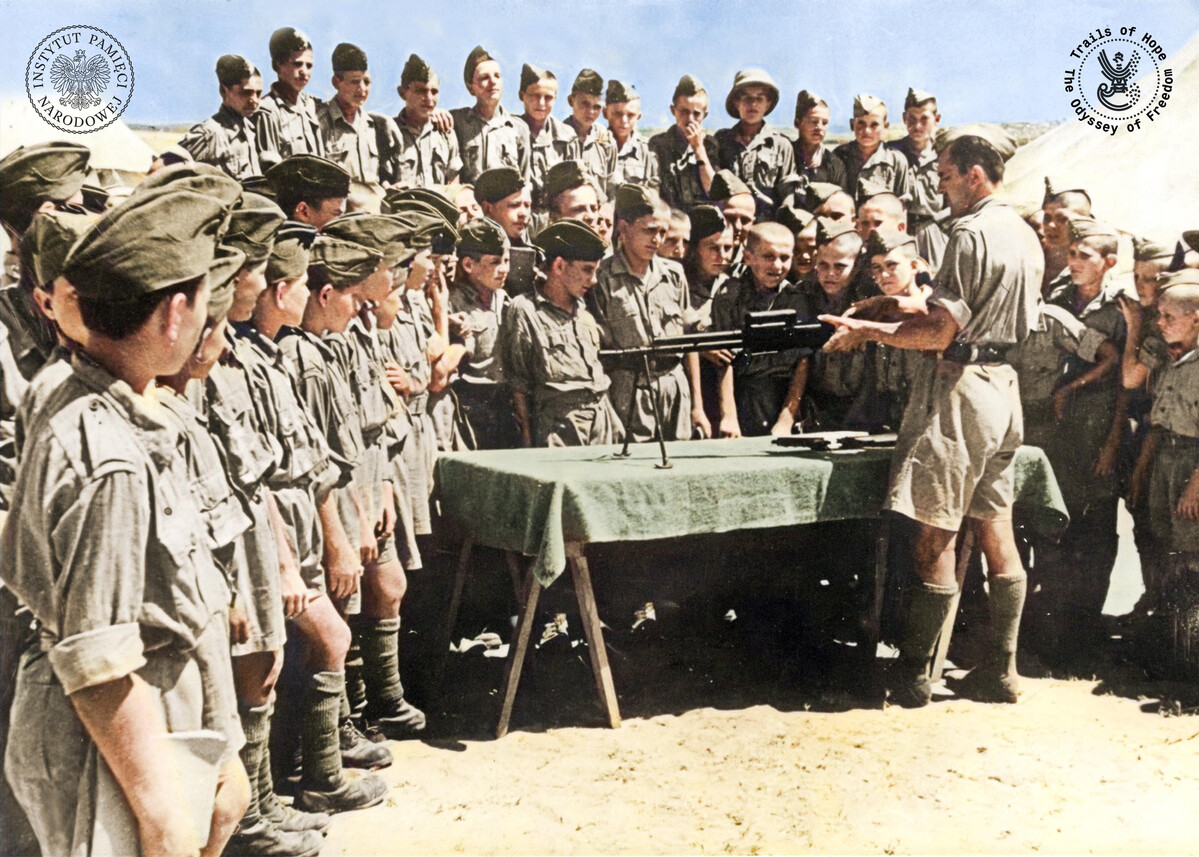
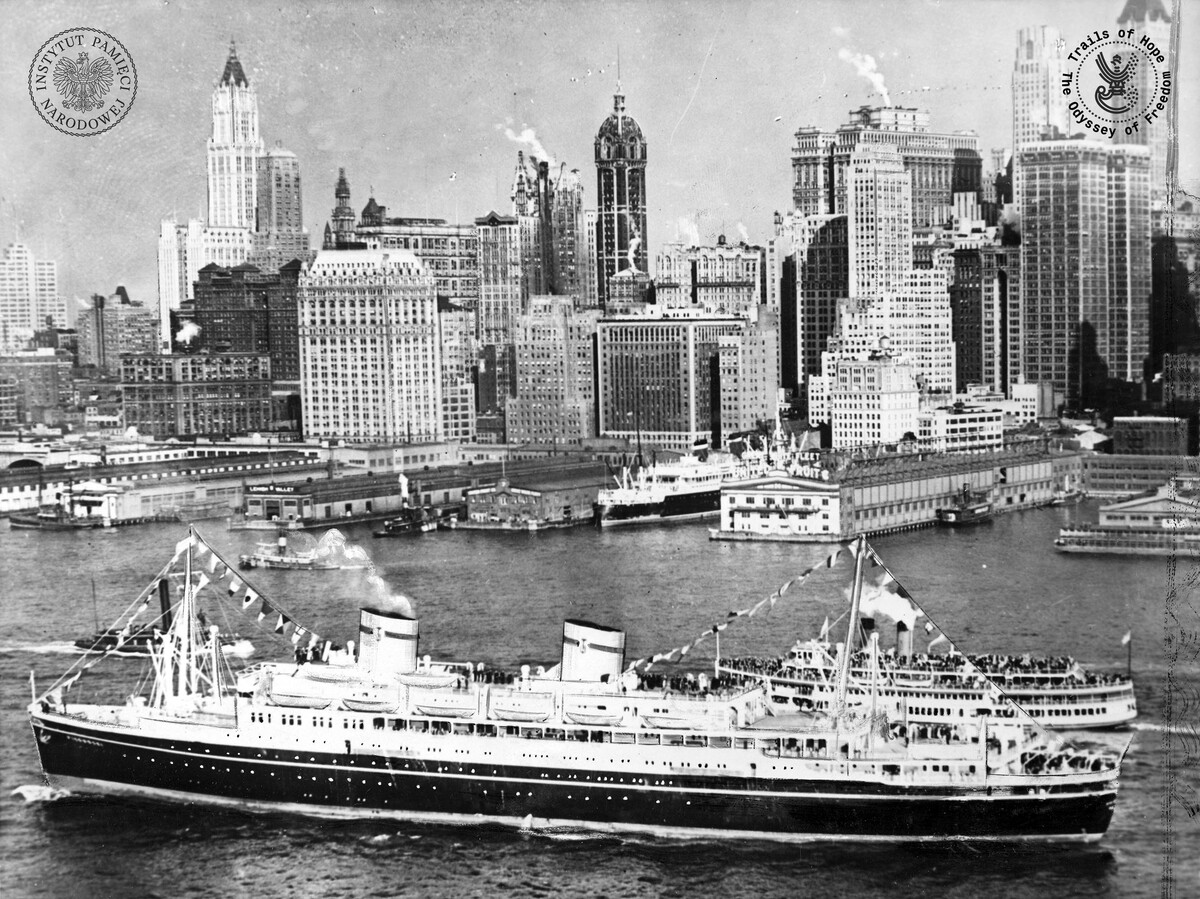
MS “Piłsudski” sailing intoNew York, 1935 (photo: NAC)
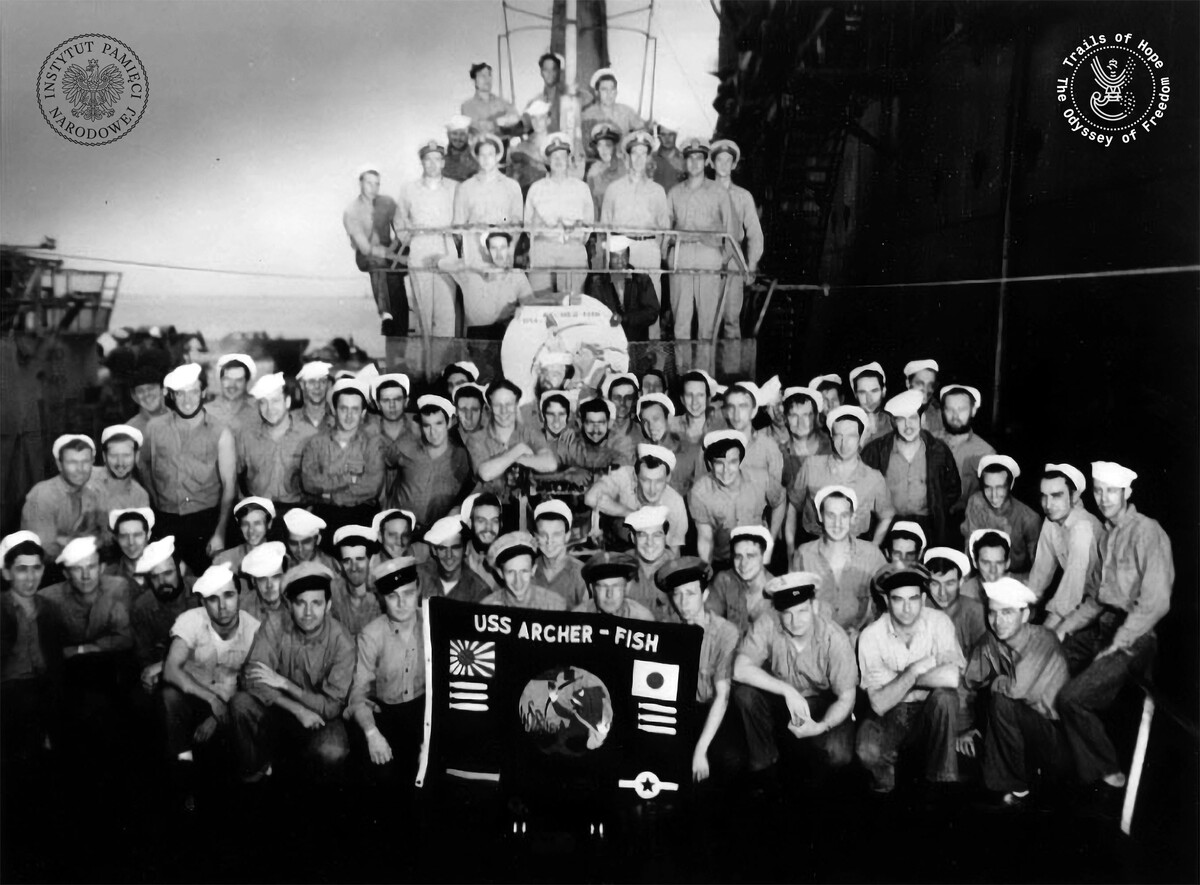 The USS “Archerfish” and its crew, 1945 (Photo: Naval History Camp; Heritage Command Photo Section)
The USS “Archerfish” and its crew, 1945 (Photo: Naval History Camp; Heritage Command Photo Section)

US Marines during the invasion of Guam, 1944 (photo: The U.S. National Archives and Records Administration)
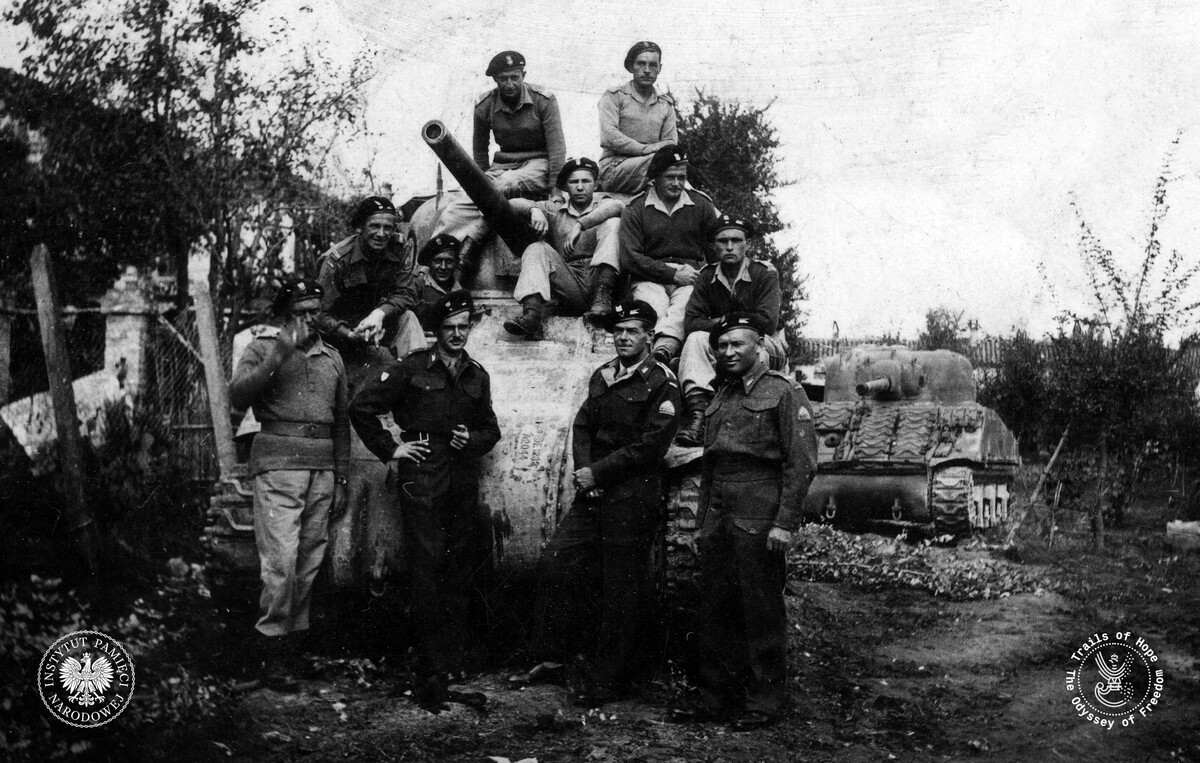
Władysław Krzyżanowski during the fighting in Italy, 1944 (Photo from Alexander Storozynski’s collection)
Prior to the opening of the "Trails of Hope. The Odyssey of Freedom" exhibition at the Kościuszko Foundation in New York, the President of the Institute of National Remembrance decorated anti-communist opposition activists from the years 1956 -1989 with the Cross of Freedom and Solidarity distinctions on behalf of the President of Poland, Andrzej Duda.The Cross of Freedom and Solidarity is awarded by the President of the Republic of Poland to the anti-communist opposition activists from 1956 -1989 in recognition of their activities for the independence and sovereignty of Poland and respect for human rights in the People's Republic of Poland. The decoration design is based on the pre-war Independence Crosses and Medals. The ceremony was attended by, among others, Consul General of the Republic of Poland Adrian Kubicki, President and Executive Director of the Kosciuszko Foundation Marek Skulimowski, the President of the Józef Piłsudski Institute Dr. Iwona Drąg-Korga and Commander-in-Chief of the Polish Veterans Association in America Tadeusz Antoniak.
In addition, the Reipublicae Memoriae Meritum gold medal was awarded to the Józef Piłsudski Institute in America.The Reipublicae Memoriae Meritum decoration is awarded to those individuals and institutions that build a republic of memory, a common republic, but also a republic aware of its past also in order to build a stronger and more powerful future for our nation, - said president Karol Nawrocki while presenting the award to the President of the Józef Piłsudski Institute in America, Dr. Iwona Drąg-Korga.
-
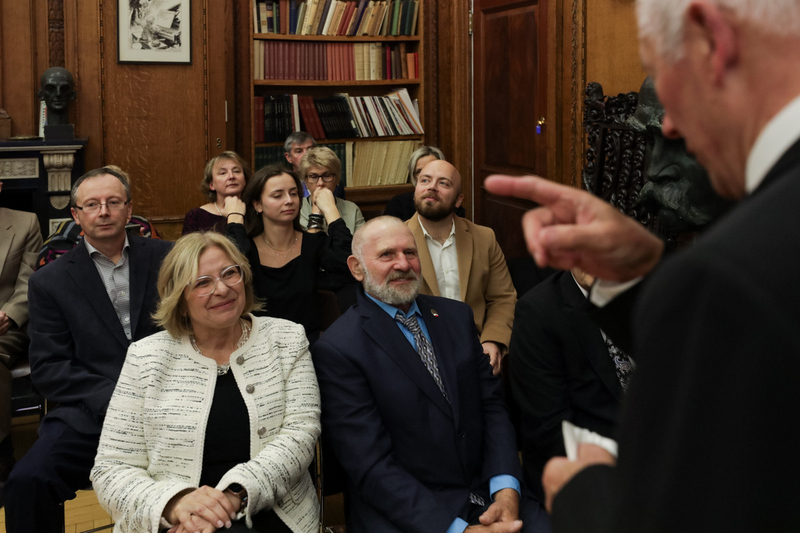
The ceremony of presenting the Cross of freedom and Solidarity Awards, New York 8 november 2023; Photo: Mikołaj Bujak IPN -
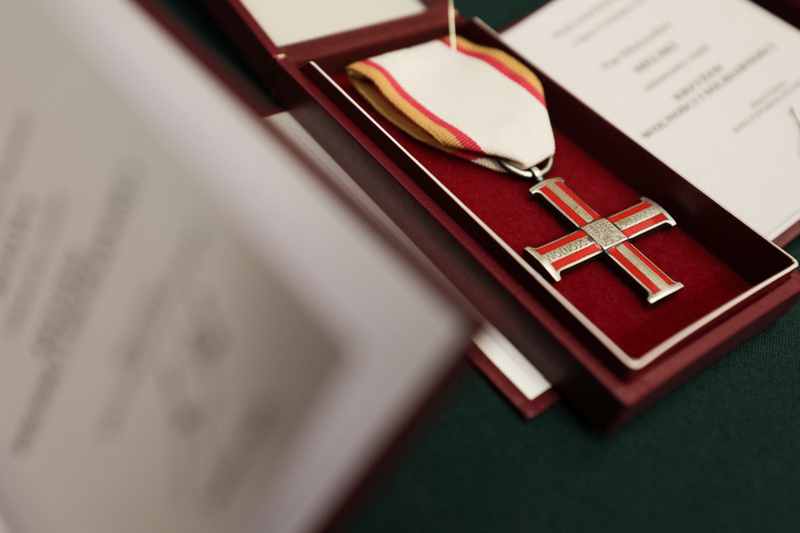
The ceremony of presenting the Cross of freedom and Solidarity Awards, New York 8 november 2023; Photo: Mikołaj Bujak IPN -
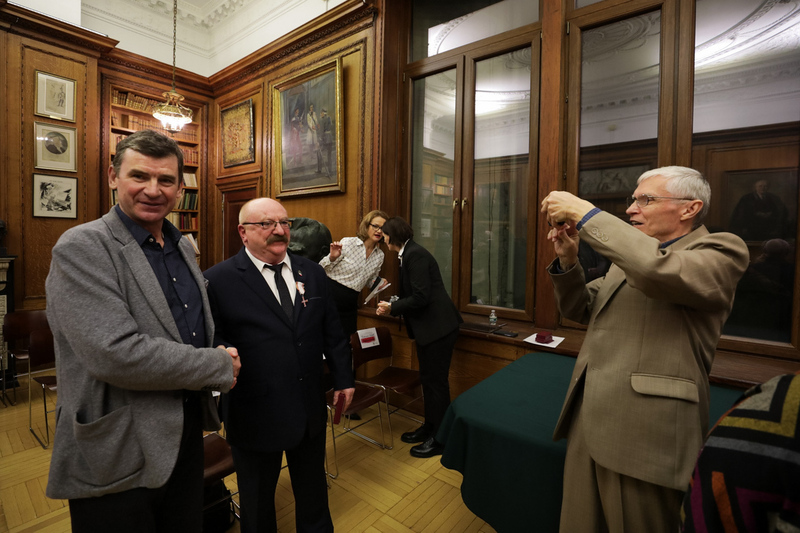
The ceremony of presenting the Cross of freedom and Solidarity Awards, New York 8 november 2023; Photo: Mikołaj Bujak IPN -
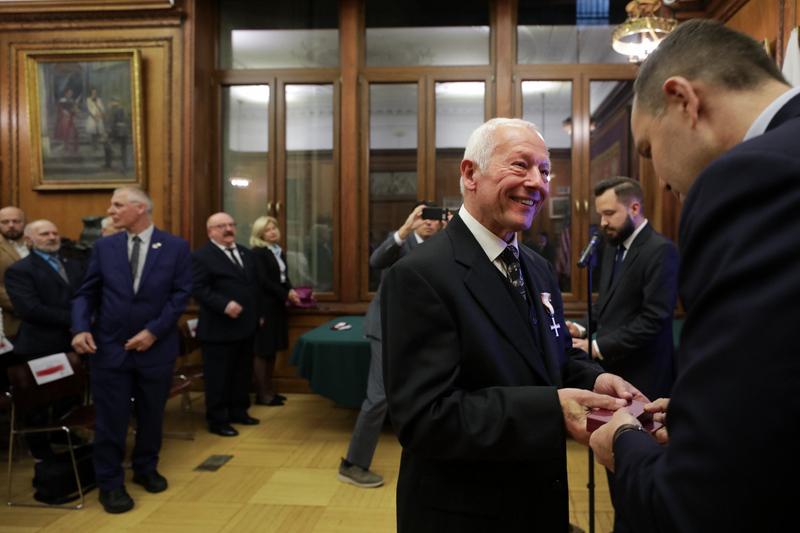
The ceremony of presenting the Cross of freedom and Solidarity Awards, New York 8 november 2023; Photo: Mikołaj Bujak IPN -

The ceremony of presenting the Cross of freedom and Solidarity Awards, New York 8 november 2023; Photo: Mikołaj Bujak IPN -
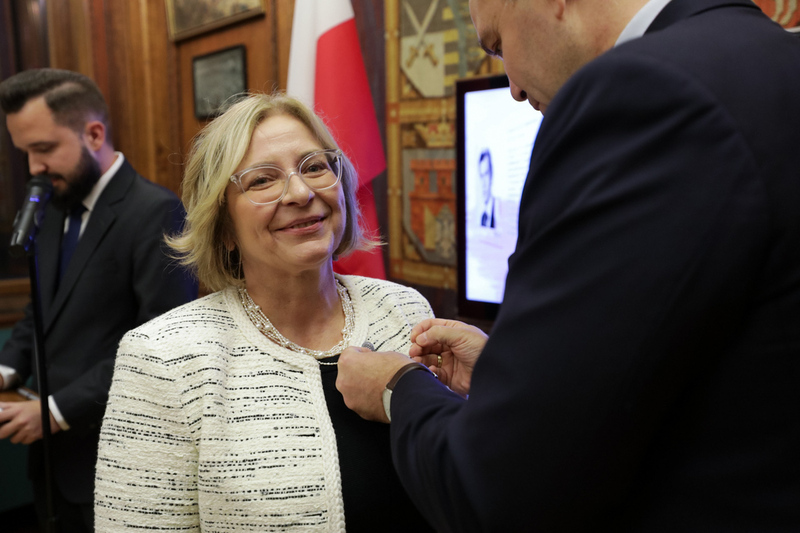
The ceremony of presenting the Cross of freedom and Solidarity Awards, New York 8 november 2023; Photo: Mikołaj Bujak IPN -
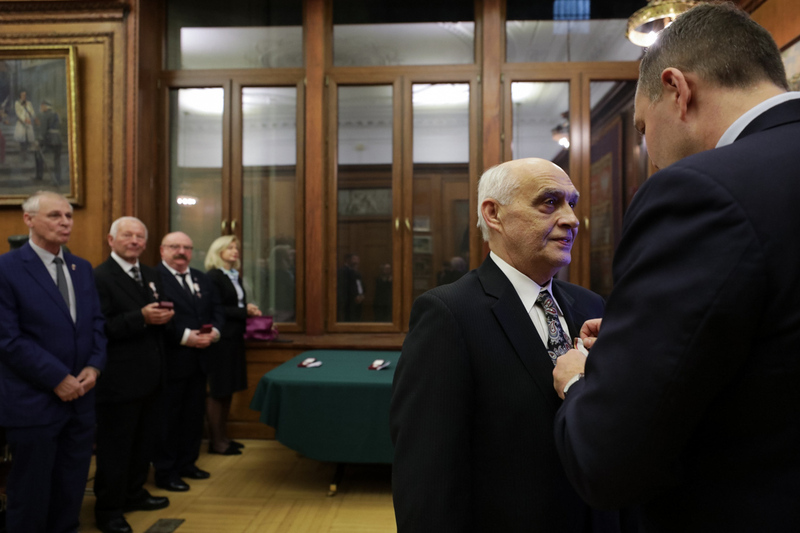
The ceremony of presenting the Cross of freedom and Solidarity Awards, New York 8 november 2023; Photo: Mikołaj Bujak IPN -
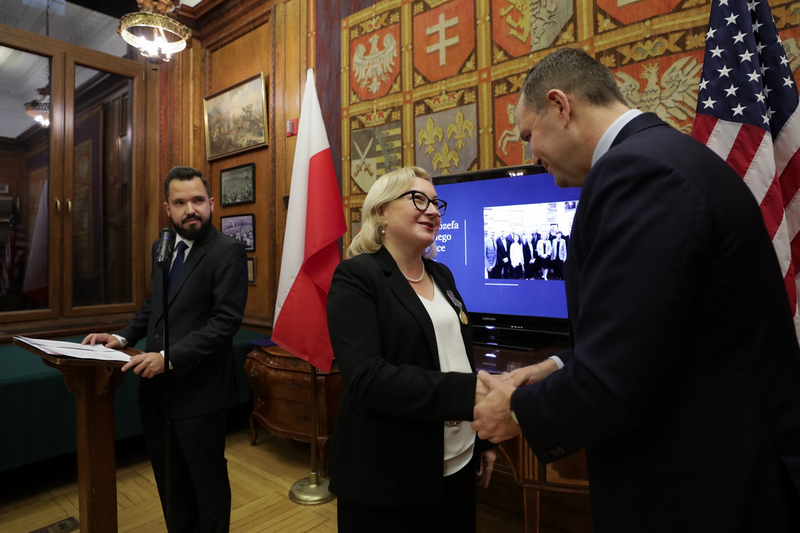
The ceremony of presenting the Cross of freedom and Solidarity Awards, New York 8 november 2023; Photo: Mikołaj Bujak IPN
Biographical notes of those honored with the Cross of Freedom and Solidarity at the Kościuszko Foundation Headquarters in New York
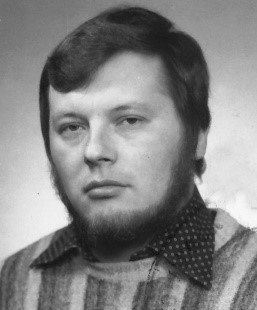
Bogdan Borkowski (born in 1954 in Dębica)
He served as deputy chairman of the Inter-company Workers' Committee of NSZZ “Solidarity” at the “Katowice” Steelworks in Dąbrowa Górnicza, later transformed into the Inter-company Founding Committee.Due to his extensive involvement in trade union activities and the possibility of negatively influencing other employees of the plant, on 13 December 1981 he was interned and imprisoned in the Detention Centre in Jastrzębie Zdrój. On 23 March 1982, he was transported to the Detention Centre in Uherce.He was released from internment on 3 July 1982. In October 1982, he emigrated to the United States with his family.
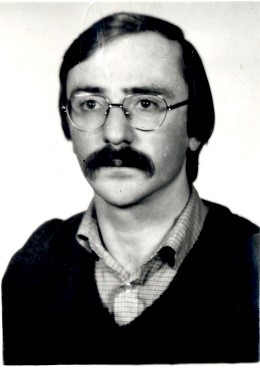
Marian Lech Czarnecki (born in 1958 in Zielona Góra)
Between 1980 and 1981, he was an activist with the Independent Self-Governing Trade Union “Solidarity” at the Zielona Góra Combined Heat and Power Plant. After the introduction of Martial Law, he continued his activities within the suspended Union, participated in its meetings, in January and February 1982, he produced leaflets with anti-communist content and distributed them throughout the city.He was arrested for his activities on 18 March 1982 and imprisoned in the Detention Centre in Zielona Góra. On 28 May1982, the Garrison Military Court in Zielona Góra sentenced him to 18 months in prison. He was conditionally released on 21 March 1983 by a decision of the Silesian Military District Court in Wrocław.After leaving the Strzelin Penitentiary, he emigrated to the USA.

Agata Kamińska-Zakrzewski (born in 1966 in Wysokie Mazowieckie)
She was a student at the Faculty of Pedagogy and Psychology of the Białystok Branch of Warsaw University. She became involved in opposition activities in 1987. During the revival of the structures of the Independent Students' Union (NZS) of the Białystok Branch of Warsaw University, she helped to establish contact with the NZS in Warsaw. She had been a member of the union since October 1988. She also served as vice-president of the Student Council of the Białystok Branch of Warsaw University (FUW). Thanks to her intercession, illegal student structures were able to benefit from material support. In addition, she acted as an intermediary between the NZS and the FUW authorities in Białystok. She prepared and presented the position of the NZS to the university authorities many times. She helped organize meetings of the independent student movement. Her room in the Student House was a meeting place for those most involved in NZS activities.She was a participant in many demonstrations between 1988 and 1989. On 11 November 1988, she took part in a rally at the Białystok Branch of Warsaw University and a demonstration of several thousand people in the streets of Białystok. She took part in protest actions on 19 January 1989 and 17 February 1989. She co-organised a sit-in strike at the Białystok Branch of Warsaw University, which took place on 26-31 May 1989 and was a form of protest against the refusal to register NZS.As part of her opposition activities, she edited the content of leaflets, made printing plates for independent publications, wrote articles for them, made banners for illegal demonstrations. In addition, she was involved in creating an independent student culture. She was co-organiser of “Klub bez Lokalu”, the first independent Juwenalia and other cultural events. She was on the editorial board of the Student Government Newsletter “O co chodzi?”.

Krzysztof Dionizy Kujawa (born in 1948 in Leszno)
From October 1981, Krzysztof Dionizy Kujawa was an activist of the Confederation of Independent Poland. He was a member of the Founding Committee of NSZZ “Solidarność” [Independent Self-Governing Trade Union “Solidarity”] at the Gliwice Coal Construction Company in Gliwice, and later he was a member of the Company and Branch Committee of NSZZ “Solidarność”.After Martial Law had been declared, he did not stop his opposition and trade union activities. As a result of this, he was detained and interned. On 16 February 1982, he was placed in the Seclusion Centre in Zabrze-Zaborze, from where on 19 March 1982 he was transferred to Uherce Mineralne. He was released on 30 April 1982.Due to his opposition activities, he was dismissed from his job and forced to emigrate. He left Poland in 1983.
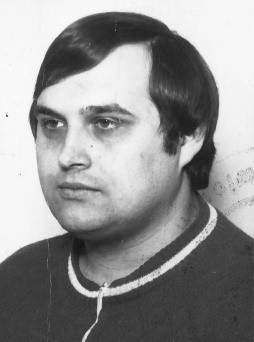
Mieczysław Melski (born in 1955 in Komprachcice)
He was an active member of the Independent Self-Governing Trade Union "Solidarity" at the "Katowice" steelworks in Dąbrowa Górnicza. In September 1981, he was delegated to work for the Board of the Silesian-Dąbrowa Region of NSZZ “Solidarity” in Katowice. Due to his active opposition activities, he was interned on 8 January 1982.He was held in the Detention Centre in Zabrze-Zaborze.He was released from internment on 23 July 1982. In 1982, he emigrated, first to Sweden and then to the United States.
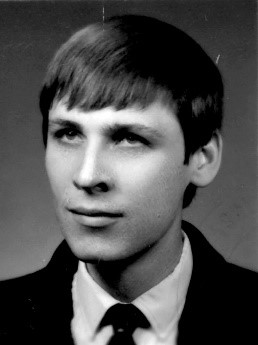
Jan Sakiel (born in 1958 in Hajnówka)
From 1978 to 1983, he was actively involved in the activities of the Academic Chaplaincy at the Diocesan Curia in Częstochowa. From 1980, he was active in the Independent Students' Union at the Częstochowa University of Technology [PCz]. He was an initiator and co-organizer of strikes and industrial action. He took part in the distribution of illegal publications and underground literature brought in from other academic centers. He inspired rallies, protest marches and meetings with representatives of opposition groups in the country. He became a member of the NZS Provisional Founding Committee.Until 1981, he was the editor of the independent magazine “Żak”, published by the NZS PCz.In 1981, he was the founder and editor-in-chief of the NZS PCz newsletter "Mini-Max". He co-organized the Independent Student Publishing House. From March to October 1981, he was a member of the NZS University Board for Information, and also a member of the NZS Częstochowa Coordination Commission. In 1981, he became a delegate to the First National Congress of NZS Delegates in Kraków.Between 1981 and 1983 he was active in the KPN. On 3 May 1981, he co-organized an academic pilgrimage to Jasna Góra. On 9 May 1981, he participated in the First National Congress of the Regional and University Committees for the Defence of those Imprisoned for their Beliefs in Warsaw. In May 1981, he co-organized a demonstration after the assassination of Pope John Paul II and a rally in defense of political prisoners. From October 1981, he served as chairman of the Audit Committee of the NZS PCz. In 1981, he was included in the nationwide “Jodła” campaign for his opposition activities. On 23 December 1981, he was interned at the Detention Centre in Białystok, and from 15 January 1982 he was in Suwałki. He was released on 25 February 1982.He emigrated to the USA in March 1983. From 1983 to 1986, he was a member of the “Pomost” Social and Political Movement, San Diego branch in California.
